Steven Lyle Jordan's Blog, page 2
March 22, 2021
A better way to deal with recyclables
The state of recycling in the US worries me. Not that people aren’t trying to recycle; that they might just stop bothering to recycle.
Why would they do that? Because news sources like Treehugger are telling people that a lot of recycled products don’t actually get recycled, because containers are missing caps, because paper is coated with wax or plastic products or food-related grease, because plastic grocery bags marked for recycling only clog up the sorting equipment, because the recycling numbers don’t actually determine what gets recycled, and because quite a bit of those items intended for recycling actually end up in landfills anyway, either in this country or in countries we ship it to (some of which have even stopped accepting our trash as too much to handle, so we can’t even get rid of it through selling it to others).
The fact is, our recycling system is woefully inefficient, and a lot of waste is being lost or landfilled. And I worry that, if more Americans realize this, they’ll stop separating trash and just pitch everything in their landfill-destined trash cans. And as landfills produce a lot of greenhouse gasses, we can’t afford to grow them.
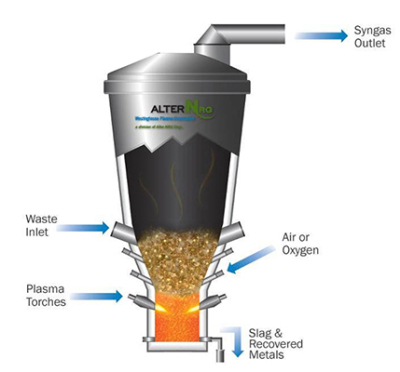 We need a way to improve our trash system across the board, both landfill material and recyclables. Fortunately, there is a way to better dispose of both: Plasma Arc Gasification.
We need a way to improve our trash system across the board, both landfill material and recyclables. Fortunately, there is a way to better dispose of both: Plasma Arc Gasification.
Plasma arc gasification involves heating waste to super-high temperatures. More than simply burning the waste, the high heat of a plasma arc creates so much heat that solids, liquids and recycling products literally vaporize, producing a syngas mixture that can be burned to create energy, and a glassy aggregate that can be used to create building materials, road surfaces and other fillers.
The plasma arc system would convert all US waste products into building materials and road materials that we can use right now for rebuilding our infrastructure, as well as producing a cleaner fuel to burn for energy, or combine with other gases or compounds. It would not be a burden for other countries to landfill, unless we wanted to sell those materials and gases to other countries, thus making the US money. We could also sell the plasma arc technology to other countries, thereby reducing landfills worldwide. We may even be able to start digging up our landfills and taking the trash to the plasma arc facilities, reclaiming lands that can be recovered or reused.
Placing plasma arc facilities placed near all major cities and throughout the nation could take care of our trash almost totally, taking the load off of landfills and even reducing our recycling content so we won’t be worrying about what’s not being recovered properly. It isn’t cheap technology, but it beats growing landfills and the increased pollution that affects everybody. And if more facilities results in technology simplification, we may see smaller and cheaper local facilities—and someday, maybe, even small units for home use—improving our trash disposal even more effectively.
We should also be rebuilding our recycling systems to be able to better recycle materials, especially the materials that put an undue strain on our existing processes. Paper processing systems should be able to handle paper impurities like grease, and plastic processing shouldn’t get clogged by thin plastic bags. But for whatever products recycling systems can’t handle, plasma arc facilities should be vaporizing the rest.
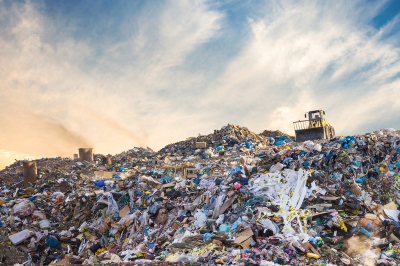 But we’re on a deadline: If the public catches on that we’re not properly recycling, and throwing even more into landfills anyway, they may stop separating their trash and start throwing all of their trash into the same hole. And we can’t afford that slide backwards, until we’re ready to properly deal with it.
But we’re on a deadline: If the public catches on that we’re not properly recycling, and throwing even more into landfills anyway, they may stop separating their trash and start throwing all of their trash into the same hole. And we can’t afford that slide backwards, until we’re ready to properly deal with it.
March 14, 2021
Telecommuting in the new normal
Presently, American businesses are planning to have their employees return to their offices this fall, pandemic-allowing. After a year of mass telecommuting, however, American employees may have something to say about that.
Despite what business owners have been telling everyone for decades, the last year has proven that working from home does work for the majority of office-type tasks. Bosses have always complained about productivity and worker distrust, using this as an excuse to outright refuse telecommuting for their employees. This was a shame, because telecommuting cuts down on traffic and the use of gasoline, with the resultant lowering of pollution that contributes to global warming and climate change.
 But in the last year that COVID has forced telecommuting on businesses, whether they liked it or not, we’ve managed to discover and develop methods of tracking jobs and productivity, thanks to cloud-based shared systems, team apps and online meetings. And now that we have a year’s worth of demonstrated proof of concept, employees can reach out to their employers and make a clear and convincing case for continuing to work from home, for most or even all of the week.
But in the last year that COVID has forced telecommuting on businesses, whether they liked it or not, we’ve managed to discover and develop methods of tracking jobs and productivity, thanks to cloud-based shared systems, team apps and online meetings. And now that we have a year’s worth of demonstrated proof of concept, employees can reach out to their employers and make a clear and convincing case for continuing to work from home, for most or even all of the week.
And why do I love this? Because I’ve not only been arguing for telecommuting for years due to its environmental benefits, I’ve always maintained that if a company tried mass telecommuting and worked out many of the kinks and unknowns related to efficient operations, they would end up with the set of procedures that would make telecommuting practical and effective, procedures that other companies could apply in their own offices.
 Today, we have those proven procedures to work with, provided by an entire nation of companies. There are no more excuses for applying telecommuting to any and all offices, because we all know now how to do it.
Today, we have those proven procedures to work with, provided by an entire nation of companies. There are no more excuses for applying telecommuting to any and all offices, because we all know now how to do it.
We’ve also reduced traffic, cut gasoline use and lowered pollution levels, in our major cities and nationwide. Telecommuting has provided measurable benefits to society, and to the environment, that we shouldn’t overlook in our desire to return to “normal” after the pandemic. This is a chance to improve “normal” and make business and employees happier, not to mention continuing to reduce our carbon footprint.
 So, if you are ordered to return to office work, don’t be afraid to talk to your boss about permanently adopting a regular telecommuting schedule for 3, 4 or even 5 days a week. I assure you, you won’t be alone.
So, if you are ordered to return to office work, don’t be afraid to talk to your boss about permanently adopting a regular telecommuting schedule for 3, 4 or even 5 days a week. I assure you, you won’t be alone.
March 11, 2021
Canceling is easy. Evolving is hard.
On the heels of the report that a number of Dr. Seuss books have been pulled by the published due to racist caricatures, the cancel culture has turned its stink-eye to Looney Tunes. In particular, renowned skunk Pepe Le Pew has been singled out for canceling, due to his overly-aggressive actions toward unwilling females.
First of all, let’s say up front that it’s pretty silly that we’re talking about cartoon characters. On the other hand, kids (and some adults) learn behaviors from cartoon characters, which is the reasoning why Pepe has been cut out of the Space Jam sequel (hadn’t heard about that? Lucky sod).
And second, cartoon or not, sexually aggressive behaviors are not acceptable in today’s more enlightened society. When Pepe was created, however, those behaviors were much more tolerated by society. Pepe was based on a combination of a Maurice Chevalier movie character, and a staffer at Warner Brothers studios who couldn’t accept the fact that women at the studio weren’t into him. This was the middle of the 20th century, and aggressive male behavior was the norm in American society.
 Today’s norm is clearly different: Behavior like that is no longer tolerated. Everyone gets that (we hope). And so naturally we don’t want to have anything to do with despicable characters who—
Today’s norm is clearly different: Behavior like that is no longer tolerated. Everyone gets that (we hope). And so naturally we don’t want to have anything to do with despicable characters who—
Okay, hold on. This is the problem with cancel culture gone too far. Sure, if you’re talking about a person (or character) that acts counter to social norms, ostracization is an option. But a person’s (and even a character’s) attitudes don’t have to be locked in stone. A person (and even a character) can change. A healthy society should want to help its citizens who want to become better people, not run them out of town on a rail. And seeing a person (or character) learn from their mistakes and act properly may be—no, it clearly is a better image and lesson for others than shunning them and acting like they don’t exist.
 So, I submit that cutting Pepe Le Pew from future movies, commercials, television, whatever, is not the best thing to do with the character. Instead, we should see a modern, enlightened Pepe, capable of hanging out around pretty girls and acting like a perfect gentleman (or, at least, still randy but polite about it), and his old friends happy to be hanging with him instead of trying to label him a loser and ditch him.
So, I submit that cutting Pepe Le Pew from future movies, commercials, television, whatever, is not the best thing to do with the character. Instead, we should see a modern, enlightened Pepe, capable of hanging out around pretty girls and acting like a perfect gentleman (or, at least, still randy but polite about it), and his old friends happy to be hanging with him instead of trying to label him a loser and ditch him.
Because throwing an undesired person away is easy. Supporting that person and helping them to change for the better is much harder… but it’s worth the effort, especially when you’re talking about a friend, or anyone who’s life is worth something.
March 9, 2021
WandaVision: Superheroes and psychoses
Marvel Studios has concluded its 9-episode series WandaVision; and it’s been such a delight to see such a tight and impactful series that it was almost as painful to see it end. Marvel has been incredibly adept at putting human layers into their superheroes, giving them real dimension, and we have seen the signs of grief and loss played out in their other movies… but never like this. Part mystery, part Twilight Zone, WandaVision has been less about superheroes and more about psychoses.
There are a lot of Marvel fans who likely didn’t get anything out of WandaVision until the very last episode’s superhero fights. And that’s fine, if you’re into that. But for those who want a bit more depth to their characters, this series throws you into the deep end at the beginning. Early episodes used the sitcom trope to lull viewers into complacency; then would throw in a sudden odd moment that Wanda would somehow alter and reset into something more expected. If you didn’t yawn and miss it, you found yourself thinking, “What did I just see?” And hopefully that whetted your appetite for more of the mystery. What was this story really about?
WandaVision is essentially the story of one character, Wanda Maximoff, and an episode of her thoroughly traumatic life. Over the years, Wanda has lost her parents to war as a child, submitted to experiments in the hopes of somehow changing the world, fought with the robot Ultron when she thought it shared the same mission, then rebelled against it when she realized the robot intended planetary genocide, lost her brother in the war against Ultron, and finally lost her love in the Infinity War. Notice a pattern?
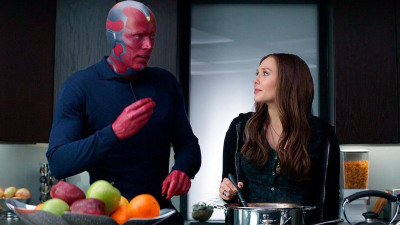 At this point, we should address the elephant in the room: Yes, Wanda was in love with an artificial being—a robot, essentially, the very being that Ultron was creating as the next generation of itself. Though the being, named Vision, was very intelligent, with incredible compassion for its young age, it’s hard to imagine a woman falling in love with a machine, especially one whose original intention was to destroy the world. Still, if you recall the movie Her, about a lonely man who falls in love with a disembodied computer voice, maybe the idea isn’t so far-fetched given the right circumstances.
At this point, we should address the elephant in the room: Yes, Wanda was in love with an artificial being—a robot, essentially, the very being that Ultron was creating as the next generation of itself. Though the being, named Vision, was very intelligent, with incredible compassion for its young age, it’s hard to imagine a woman falling in love with a machine, especially one whose original intention was to destroy the world. Still, if you recall the movie Her, about a lonely man who falls in love with a disembodied computer voice, maybe the idea isn’t so far-fetched given the right circumstances.
WandaVision gives us an idea of how that strange relationship blossomed, and it may have been as simple as Vision being the warmest and most sympathetic of her new comrades, the Avengers; in times of stress or grief, as Wanda was after she lost her brother, sometimes all it takes is one sympathetic person to become the anchor for a griever. And if Vision was Wanda’s anchor, it apparently didn’t matter to her that he wasn’t human.
So when he, too, was lost to her in the Infinity War battle, Wanda went through the first of the classic stages of grief: Shock and denial of Vision’s loss on the battlefield; pain, and though we don’t know how much guilt she felt, she channeled her anger into a second battle; later bargaining with SWORD over Vision’s dismantled body; and finally, depression and disconnection when she realized she couldn’t feel Vision’s “soul” any more. We are first led to believe she stole the body, but in fact she walked away from what she considered an empty shell.
 From there, things get interesting, because Wanda was in a unique position to act on her grief. This, too, isn’t unusual in loss, and those who suffer it often choose something else in which to channel their feelings, whether it’s a person, a pet, or a pursuit. But using her magic, Wanda created a new Vision, an identical surrogate for her lost love. She also created an idyllic home for them to live in, based around childhood memories of happy homes from sitcoms she grew up watching. From a standpoint of loss, regression is also not unusual; it’s just that Wanda can take regression a lot more literally than most.
From there, things get interesting, because Wanda was in a unique position to act on her grief. This, too, isn’t unusual in loss, and those who suffer it often choose something else in which to channel their feelings, whether it’s a person, a pet, or a pursuit. But using her magic, Wanda created a new Vision, an identical surrogate for her lost love. She also created an idyllic home for them to live in, based around childhood memories of happy homes from sitcoms she grew up watching. From a standpoint of loss, regression is also not unusual; it’s just that Wanda can take regression a lot more literally than most.
 And so we find ourselves witnessing a textbook case of Post Traumatic Stress Disorder of the worst kind, compounded by the fact that Wanda’s pain is causing others pain… specifically, the entire town of Westview that becomes captive to her personal needs. It takes a few episodes before the audience starts to realize what the townspeople are being put through, thanks to the distractions of the changing sitcom backgrounds, and the audience’s predilection for trying to guess what comes next, good, bad or indifferent. The audience’s reaction was much like knowing a PTSD individual in a struggling house, and the individual’s problems in order to quietly try to guess whether the household will settle in or fall apart.
And so we find ourselves witnessing a textbook case of Post Traumatic Stress Disorder of the worst kind, compounded by the fact that Wanda’s pain is causing others pain… specifically, the entire town of Westview that becomes captive to her personal needs. It takes a few episodes before the audience starts to realize what the townspeople are being put through, thanks to the distractions of the changing sitcom backgrounds, and the audience’s predilection for trying to guess what comes next, good, bad or indifferent. The audience’s reaction was much like knowing a PTSD individual in a struggling house, and the individual’s problems in order to quietly try to guess whether the household will settle in or fall apart.
Eventually, Wanda’s influence on things outside her home must be dealt with, at the same time that elements within her house start to break down; Vision realizes that his life isn’t real, his memories are gone, and he doesn’t enjoy being Wanda’s unwilling tool. As is typical of sitcoms, in fact most American television, and quite honestly real life, when there’s a conflict or misunderstanding, the characters rarely sit down and work out their differences, but instead double down on whatever subterfuge they have in place, and problems get worse. So Wanda and Vision start to drift apart, leaving them vulnerable to outside forces.
They manage to regroup in time to repel the inevitable bad guys, in a battle most superhero fans were surely waiting for; but in the process, Wanda must again confront her forced captivity of the townspeople, and the mental torture which she didn’t realize (or wouldn’t acknowledge) she was putting them through. She finally manages to shut down the hex that held the town captive… but in so doing, she also loses everything that was created to restore her, including her Vision. A few of the characters realize how impactful that is to Wanda, but most of them have themselves been traumatized by her, and just want her gone. So Wanda leaves, flying at full speed out of Westview in sadness and shame.
 She ends up isolating herself, for privacy and to avoid hurting anyone, in a house in a distant forest, where she tries to gain more knowledge and control of her powers—in a scene reminiscent of the end of Ed Norton’s The Incredible Hulk, which seemed to have a positive effect on Bruce Banner. Will isolation work for Wanda? There’s no telling. After all, not all methods of dealing with grief or loss work the same on different people, and self-isolation can often exacerbate mental issues in unexpected ways.
She ends up isolating herself, for privacy and to avoid hurting anyone, in a house in a distant forest, where she tries to gain more knowledge and control of her powers—in a scene reminiscent of the end of Ed Norton’s The Incredible Hulk, which seemed to have a positive effect on Bruce Banner. Will isolation work for Wanda? There’s no telling. After all, not all methods of dealing with grief or loss work the same on different people, and self-isolation can often exacerbate mental issues in unexpected ways.
So, in 9 episodes, WandaVision has managed to delve into levels of emotional turmoil deeper than any other character we’ve seen in the MCU, a deep psychosis that has spread the character’s pain among multiple innocents, and most significantly, has not yet been, and may never be, fully salved.
I’m an old school fan of psychological SF series like The Twilight Zone, The Prisoner, Mr. Robot, etc, and recognize how seldom we get content of that nature or quality from television. As soon as I realized from the trailers that this is where the series was going, I thought: Super battles are great; but I’ll eat up psychological stories anytime. And WandaVision was a true feast.
February 27, 2021
How many electric cars, exactly?
There have been electric cars since… well, in fact there were electric cars before there were internal combustion engine cars. So we can say there have always been electric cars. But since the oil industry took off, and cars dedicated themselves to running on gasoline, electric cars have been so few that it was easy at times to forget that there were any electrics at all.
Fast forward to 2021, with our greater efforts to switch to sustainable and low-polluting energy, and suddenly we’re seeing more electric vehicles in the industry. But in proportion to the gas-powered industry, there are still not many electrics compared to the number of gas vehicles. In many ways, it seems little has changed.
General Motors may lend a hand in changing that: They claim that they will have 30 electric vehicles on the market by 2030… which sounds like a lot. Most likely they’d love to be a part of the U.S. government’s push to replace most of their gas-powered fleet with electrics, a significant market. And other car companies may see that number and, in the interest of competition, strive to create more electrics to increase their market share. So we could potentially see, in just a few short years, a sizable increase in the number of electrics available to buy.
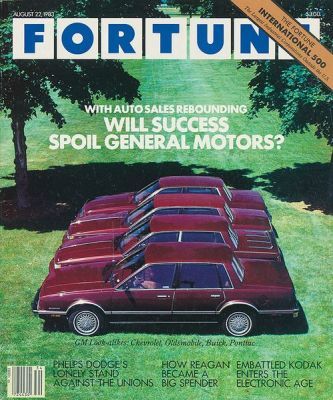 But I emphasize the word “potentially” for a reason. Though “30 electrics by 2030” sounds impressive, the reality may look a bit different. “30 electrics” sounds like “30 different vehicles,” but the fact is that GM frequently makes vehicles with multiple trim packages, and defines each package as a different vehicle. So a single vehicle with 5 trim packages becomes 5 vehicles. You can see where we’re going with this: “30 vehicles” could be 10 vehicles with 3 trim packages each, or 5 vehicles with 6 trim packages, or 3 vehicles with 10 trim packages each, or any combination thereof.
But I emphasize the word “potentially” for a reason. Though “30 electrics by 2030” sounds impressive, the reality may look a bit different. “30 electrics” sounds like “30 different vehicles,” but the fact is that GM frequently makes vehicles with multiple trim packages, and defines each package as a different vehicle. So a single vehicle with 5 trim packages becomes 5 vehicles. You can see where we’re going with this: “30 vehicles” could be 10 vehicles with 3 trim packages each, or 5 vehicles with 6 trim packages, or 3 vehicles with 10 trim packages each, or any combination thereof.
In 2019, GM sold a single truck in 8 different packages. From Motor Biscuit:
GM’s C1XX platform, better known as C1 underpins eight (so far) GM SUVs. At least one can be found in each division’s offerings. That’s Chevy, Buick, Cadillac, and GMC trucks. It has variations engineered into it so that both wheelbases and even track can vary, besides the obligatory sheetmetal and interior variations.
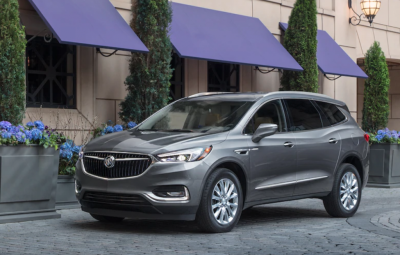 Does this sound underhanded? Yes. Does it sound like something GM wouldn’t stoop to? No, when you consider GM has pulled stunts like this for decades. During the 1980s, when the need for vehicles with better gas mileage surfaced, GM (along with Ford and Chrysler) followed the federal guidelines to make fuel efficient cars to improve their fleet mileage average… and they did build their fuel efficient cars to supplement their fleet. But when it came to selling, GM (and the rest) heavily marketed their inefficient SUVs instead of the efficient cars, and made a huge profit off cheap-to-manufacture trucks with Corinthian leather interiors, while the cars sat in storage lots hidden behind the dealerships. National fuel use dropped, but not nearly as much as the government wanted; automakers were able to say, “We did our part, like we were told to… it’s the public’s fault for not buying the fuel efficient cars we provided.”
Does this sound underhanded? Yes. Does it sound like something GM wouldn’t stoop to? No, when you consider GM has pulled stunts like this for decades. During the 1980s, when the need for vehicles with better gas mileage surfaced, GM (along with Ford and Chrysler) followed the federal guidelines to make fuel efficient cars to improve their fleet mileage average… and they did build their fuel efficient cars to supplement their fleet. But when it came to selling, GM (and the rest) heavily marketed their inefficient SUVs instead of the efficient cars, and made a huge profit off cheap-to-manufacture trucks with Corinthian leather interiors, while the cars sat in storage lots hidden behind the dealerships. National fuel use dropped, but not nearly as much as the government wanted; automakers were able to say, “We did our part, like we were told to… it’s the public’s fault for not buying the fuel efficient cars we provided.”
So don’t think GM, and every other car manufacturer, doesn’t have it in them to pull the wool over buyers’ eyes if they think they can get away with it and make more profit; after all, that’s what they’re in business to do. And because of that, it’s really hard to say how many real options for electric cars might be available by 2030, or even 2040 or 2050.
Long story short, consumers will have to keep a sharp eye on how manufacturers make good on their claims for future electric vehicles, and be prepared to shout out if it looks like we’re being short-changed by shenanigans. GM may lead many other manufacturers, but those other manufacturers may match GM’s shenanigans; and as a result, we may be looking at a reality of far fewer electrics than they would have us believe.
February 17, 2021
Texas’ climate-driven alternatives
It’s really a shame to see Texas, a proudly independent state, suffering under one of the worst winter cold snaps since the mid-20th century. Their suffrage is a combination of climate change, coupled with Texas’ assumption that winter would never be a problem of theirs, and the republican-inspired leeway they give to their power companies, catching them with their chaps down and leaving ~40% of its residents without power for days.
And to add insult to injury, Tim Boyd, Mayor of Colorado City, Texas, wrote a historically insensitive message on Facebook, telling Texas residents:
“No one owes you [or] your family anything; nor is it the local government’s responsibility to support you during trying times like this! Sink or swim it’s your choice! The City and County, along with power providers or any other service owes you NOTHING! I’m sick and fired of people looking for a damn handout.”
He resigned the next day, but those words can hardly be taken back.
Although Boyd’s stupid words totally contradict the reality of modern life (including in Texas), there’s a point to them that should be considered: In the case of energy, modern Americans have an independent alternative to the power grid that failed them so badly; and in modern times and the pressures of climate change, that alternative should be considered, not just by Texans, but by all Americans.
That alternative is solar power. In Texas, fields of solar cells, along with windmill forests, make up about 20% of the state’s power (and despite republican claims, are not to blame for power losses and blackouts… non-winterized equipment are). But instead of depending on those solar cell fields, Texans should use this circumstance to put their own solar cells on their roofs and in their yards.
 Solar cells have reached a high enough efficiency and low enough price that it is now affordable for many Americans to buy them and have them installed; and many power companies are offering incentives for the rest of Americans to buy or lease them. The advantage to having your own cells is the generation of power at your site… your power, provided to your home whether or not the grid is active, saving you money from using grid-based power and taking pressure off the grid.
Solar cells have reached a high enough efficiency and low enough price that it is now affordable for many Americans to buy them and have them installed; and many power companies are offering incentives for the rest of Americans to buy or lease them. The advantage to having your own cells is the generation of power at your site… your power, provided to your home whether or not the grid is active, saving you money from using grid-based power and taking pressure off the grid.
If the majority of Texan homes had had solar cells at the beginning of this climate attack, power grids could have shut down for self-preservation, and homes would still have power to keep warm, to keep pipes from freezing, to allow families to cook hot meals and to keep their batteries from discharging due to the cold.
And think about it: As more communities deal with the ongoing pressures of climate change, which includes power outages due to infrastructure damage from floods, landslides, tornadoes, fire, ice and weather-wear and age, the more individual homes could provide power for themselves and take pressure off the grids by installing their own solar cells.
It’s already too late for Texas’ record climate attack, as well as it’s too late for other places that have already suffered from climate-change-related losses. But before the next loss occurs, we should all be considering upgrading our homes with solar cells that will protect our homes and take pressure off of fragile power grids.
February 6, 2021
Concession speech
Ladies and Gentlemen: I’d like to make a statement. After numerous attempts to restart my novel writing efforts, and after the utterly stunning lack of support for my latest book release, I now concede the failure of my efforts: The world clearly doesn’t want books from me.
I cannot argue with the facts that have been presented to me. Those facts came to light when I tried to arrange promotion of my upcoming book by soliciting reviewers to provide reviews when the book was to be released. Unfortunately, I could not even arrange a few dozen reviewers for a free book. I also tried to arrange some support and promotion from people in the SF industry with their own larger audience. But, like the reviewers, I couldn’t arrange enough influential support.
My efforts to create a promotional team for my book failed completely and definitively. And without sufficient funds to back a major advertising program, I clearly have no other avenues for promotion of my books that can compete against other, mass-marketed books and franchises.
And it’s truly embarrassing that it took me 25 years to accept this reality. 25 years, 18 books and nothing to show for them except a bunch of copyright receipts (which, frankly, cost me more than I made on most of the books themselves).
Due to this long-overdue epiphany, I am postponing the release of my latest novel indefinitely. I am also indefinitely suspending any other potential book projects, most of which depended on the success of the latest novel project to see any success.
So, I couldn’t overcome the uphill battle of selling independent, original, intelligent science fiction novels to a pew-pew Star Wars-obsessed SYFY audience with no promotional funds, star backing or viral click-baity nonsense driving people to my site. Well, I’m not the first, and I certainly won’t be the last. Promotion isn’t magic; it requires resources and connections to work in your favor; but it also requires some breaks to overcome the sheer volume of other content competing for attention.
My efforts to overcome my dearth of resources with popular support, plus an occasional break, has never been successful. Again, I’m not the first to be in this situation; for every successful person, there are thousands, maybe millions of people whose efforts just don’t work out for one reason or another. So be it. I just hope that this time, the message finally sticks.
Because I’m getting old, and I no longer have the desire to try to entertain strangers who don’t want my brand of entertainment. I mean, you want 40 year old Star Wars, 50 year old Star Trek and 90 year old Buck Rogers retreads, s’okay… allow me to just step out of your way while you do you.
But be aware that I have no plans to commit seppuku at this time. You’ll still see an occasional blog post or social media comment from me. Just be assured that it won’t be with the intent to demonstrate my writing chops or lure you into buying any books from me. I’ve learned my lesson. I did it my way… and got thoroughly stomped on. Message finally received.
I’d like to thank my wife for being the only one in my life who consistently made it clear that I was wasting my time with writing fiction all these years! (If only I’d listened to her.) I’d also like to give a subtle (but not condemning) evil eye to everyone else who encouraged me to keep up with this folly for so long.
And I offer a sincere apology for those who supported and looked forward to the new book. All 5 of you. (No names, I wouldn’t want you all to be the target of retaliation by the masses.)
So, no hard feelings. You can now return to your regularly-scheduled lives. Thank you very much.
February 4, 2021
The Onuissance
One of my first writing projects, many many moons ago, was a series of short stories based around a period in the future when humanity had collectively decided to own up to its collective mistakes and work towards an honestly better life, as non-polluting as possible, easy on the land and the flora and fauna that lived on that land. The stories were originally intended to be breakdowns for illustrated content for a graphic novel, but I thought the stories ultimately worked better than my graphic content.
It was a time when racism was recognized as a non-issue, as there were only variations on the one race—the Human race—and people didn’t distinguish each other by physical differences. It was a time when people understood the proper uses and limitations of technology, and when it wasn’t needed in areas where people could handle the task just fine. It was a time when finances didn’t control people’s lives, they only augmented government-supported basic lifestyle levels, which made sure no one was homeless, hungry or cold. And it was a time when we embraced nature in all its beauty and complexities, and made sure we left as minimal a footprint as possible on our Earthly neighbors and environment.
 I even developed a name for this period: The Onuissance, or Age of Responsibility. I saw this as the inevitable result of humanity’s coming to a full understanding of what it took to be a highly-functioning part of the planet we live on, and devoting itself to cleaning its own house and achieving that high standard of living and harmony.
I even developed a name for this period: The Onuissance, or Age of Responsibility. I saw this as the inevitable result of humanity’s coming to a full understanding of what it took to be a highly-functioning part of the planet we live on, and devoting itself to cleaning its own house and achieving that high standard of living and harmony.
This, of course, was science fiction set about a few centuries in the future. When I wrote it, climate change and global warming were not yet recognizable “things” with the public, and many of the environmental pressures we find ourselves in now weren’t issues then. In other words, we were still a long ways off before we reached the brink that would force its pivot to the fictional Age of Responsibility. In real life—no surprise—we find ourselves reaching that brink a lot sooner than in my fiction.
But we are certainly teetering ever closer to that brink, with climate change wrecking environments and killing entire species faster than it has in centuries; and with people becoming even more divisive and antagonistic over petty things like skin color, and invented things like money, until neighbors refuse to come together over even the simplest problems and issues on their block.
My Onuissance stories presented a world of humans that reached that brink and finally joined hands to save itself, instead of flinging itself into the abyss. Today, and especially thanks to the last four years of governance in the U.S., a frightening number of people are willingly poising themselves to jump, and pulling the rest of us with them. Onuissance is close to being denied, in favor of immolation.
Will calmer, more intelligent heads pull us from the edge in time? Or will we, as a nation, jump into that abyss, leaving others to usher in the Onuissance? I don’t know, but I expect I’ll know soon; we’re not far from that decision point now.
January 28, 2021
Coal’s pivot-point
There are plenty of articles to be found like Huffington Post’s recent story about the shrinking fortunes of coal. Most of them are very similar in that they support President Biden’s desire for cleaner and more sustainable energy systems, and decry coal’s horribly polluting past as a fossil fuel and generally cheer its imminent departure (unless they are contemplating the concurrent fortunes of those who make a living mining it… and those articles tend to be fewer in number).
 For the record, I concur with those articles that the days of burning coal should be numbered, and a very small number at that. But this is a foregone conclusion; and I’m surprised that so few people are thinking beyond the concept of burning coal. Happily, I’ve discovered that folks at the U.S. Department of Energy get it, and are trying to introduce coal’s future, its pivot-point, to the nation.
For the record, I concur with those articles that the days of burning coal should be numbered, and a very small number at that. But this is a foregone conclusion; and I’m surprised that so few people are thinking beyond the concept of burning coal. Happily, I’ve discovered that folks at the U.S. Department of Energy get it, and are trying to introduce coal’s future, its pivot-point, to the nation.
If, like me, you’ve been paying attention to news related to materials, manufacturing and modern science, you’re constantly being introduced to new material compounds and fabrication techniques that are giving us newer, or stronger, or lighter, or more efficient materials and compounds. Many of those new materials exist thanks to advances in working with Fullerenes, those highly organized molecular chains that we’re finding new ways to combine with existing materials, to make those materials better. And as it happens, fullerenes are made of carbon, the stuff we get out of—you guessed it—coal.
The DOE is hip. With the more efficient and less polluting energy options we already have and are developing further today, they’ve realized that carbon is no longer useful as a cheap and dirty energy source… but it’s becoming increasingly important as a manufacturing material. Carbon molecules, in the form of fullerenes, can be used to make or improve all sorts of materials, from major manufacturing machinery to everyday household items. All that carbon can come straight from coal; it can also be captured from atmospheric pollutants and reused, making a way to create carbon sinks and sequester all that extra carbon into objects, getting it out of the atmosphere. Those objects can be recycled, broken down and reused for other elements, or simply added into existing materials to hold it until it’s ready to recycle again.
And when we talk about new and better materials, that includes better batteries and battery technology, needed for our growing solar, wind and electric car industries and their need to improve battery range and quick-charging systems. Carbon and fullerenes are already improving these systems, and as we learn more about how to apply them, we can expect to see even better and longer-lasting batteries and charging systems, as well as better materials, hopefully not so far down the road.
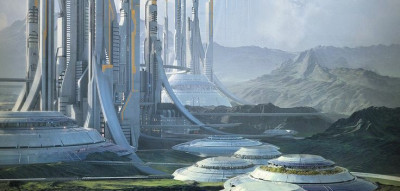 The goal is a better world, built with lighter, stronger, more flexible and versatile materials all around us; an improved world with things around us that can outperform older materials and amaze us on a daily basis. And incidentally, one that has less carbon in the air, giving us a healthier, not-so-quickly-warming world.
The goal is a better world, built with lighter, stronger, more flexible and versatile materials all around us; an improved world with things around us that can outperform older materials and amaze us on a daily basis. And incidentally, one that has less carbon in the air, giving us a healthier, not-so-quickly-warming world.
This isn’t an easy pivot point for coal, especially as many of these carbon-using fabrication and manufacturing methods are still at the bleeding edge stage of development. But the relatively near future points to an improved manufacturing path for all that carbon… and therefore, all that coal. This actually bodes well for all those coal mines, and its coal workers, who will have a new reason to mine that black stuff. As manufacturing with coal goes up, demand will increase and jobs will multiply, and areas that depend on coal mining for their own wealth, can continue to prosper off of their natural resource.
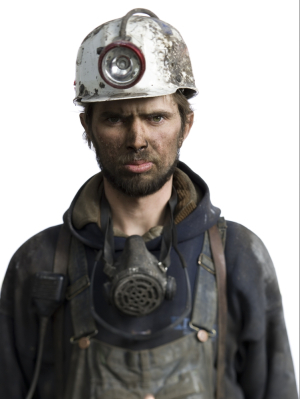 There is still coal’s big, swollen, ugly-purple Achilles’ heel to deal with: Mining the stuff is still dirty and dangerous to human health. One would hope that an industry with such promise (and profit) going forward will sink some of that promise into making the whole industry healthier for its workers. Maybe the government will have to force it on them. Either way, the industry and the people will benefit long-term, so, win-win.
There is still coal’s big, swollen, ugly-purple Achilles’ heel to deal with: Mining the stuff is still dirty and dangerous to human health. One would hope that an industry with such promise (and profit) going forward will sink some of that promise into making the whole industry healthier for its workers. Maybe the government will have to force it on them. Either way, the industry and the people will benefit long-term, so, win-win.
So, instead of cheering for coal’s downfall, we should be working on giving coal its pivot-point from dirty power supply to highly useful manufacturing material, as soon as possible.
January 19, 2021
This shouldn’t be the end of the Verse
There have recently been rumors that someone at Disney was considering a reboot of Firefly, the series about a group of outsiders, led by a man still harboring ill-will about being on the losing side of a civil war, trying to stay under the radar as they make a barely-legal living on the fringes of society.
Sadly, the rumors proved unfounded. More’s the pity… but maybe we shouldn’t discount the possibility of more or similar stories in the future; because the truth is, the storytelling universe created for Firefly is rich in potential for realistic, fantastic and dramatic science fiction.
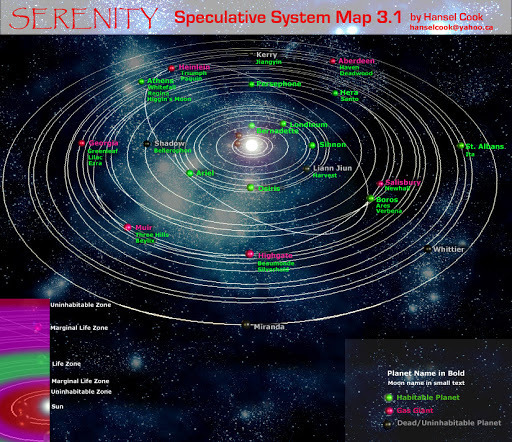
The storytelling universe for the show was literally known as The Verse, a single large solar system of multiple planets and moons, many of which were ripe for terraforming into human habitats. After humans wore out old Earth and escaped from it in a fleet of ships, they found the system and started rebuilding it. Some planets became luxurious places for humanity to live and thrive on; others mostly provided resources for the luxurious planets; and people set up homesteads, worked hard to mine materials and sold them in system-wide markets.
After a time, the inner planets decided to pool their resources into one political entity, the Alliance. The smaller independent planets weren’t interested in being part of the Alliance, however, and wars broke out throughout the Verse. Eventually the Alliance won and became the single government of the Verse, but despite their initial promises, unification didn’t provide a lot of betterment to the working and mining planets, leaving a lot of ill-will between the rich and the poor planets. Much like the aftermath of America’s Civil War, there were many who felt left behind or betrayed by the Alliance, and some (like Malcolm Reynolds, Captain of the Serenity) never got over it.
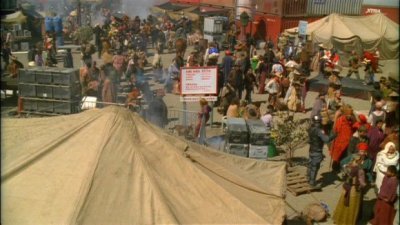
We were treated to life in the Verse from Captain Reynolds’ perspective in Firefly. During that time, we were shown the best and the worst of the planets and the people thereon, from the rich, pampered and mostly self-absorbed Tams (River and Simon’s parents) to those scratching out a bare living, or settling into illicit trades to survive. We saw the parties of the wealthy, the prostitutes in their thrown-together homesteads, and everything in-between. We saw towering buildings, gleaming hospitals, and people living in mud and cloth camps. This Verse was as rich in backgrounds and characters as any country on Earth.
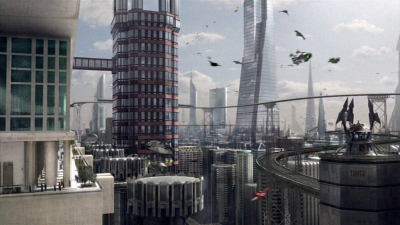 And it’ll be a crying shame if the rich tapestry of the Verse is never used by any other storyteller. You have the option for writing stories about people living the best life possible, or those struggling to reach that best life. You can write stories about those doing cargo runs, like Serenity, or someone with a better ship and resources by virtue of being on the up-and-above-board Alliance side during the war. You can use the Verse for police and military dramas, for gumshoes and friendly wanderers, people trying to save the world with science and people trying to corrupt it with that same science. It’s a new solar system, and there may be interesting history to explore. There may be other nearby systems within reach. There may be aliens out there somewhere, or hints that they were there once.
And it’ll be a crying shame if the rich tapestry of the Verse is never used by any other storyteller. You have the option for writing stories about people living the best life possible, or those struggling to reach that best life. You can write stories about those doing cargo runs, like Serenity, or someone with a better ship and resources by virtue of being on the up-and-above-board Alliance side during the war. You can use the Verse for police and military dramas, for gumshoes and friendly wanderers, people trying to save the world with science and people trying to corrupt it with that same science. It’s a new solar system, and there may be interesting history to explore. There may be other nearby systems within reach. There may be aliens out there somewhere, or hints that they were there once.
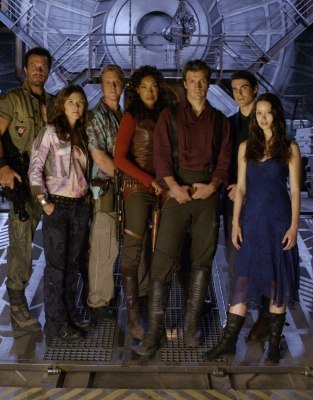 And if you really wanted to, you could even write stories about your characters occasionally crossing paths with Malcolm Reynolds and the crew of Serenity, may they be friends or foe.
And if you really wanted to, you could even write stories about your characters occasionally crossing paths with Malcolm Reynolds and the crew of Serenity, may they be friends or foe.
In this era where all it seems anyone can do is reboot old shows, I think we can do better. So, if you’re tired of the umpteenth barely-a-variation of Star Trek or Star Wars, maybe consider developing new series that take advantage of this well-built bible of sci-fi worlds, creating new characters that can occupy new stories, new twists and different dramas.



